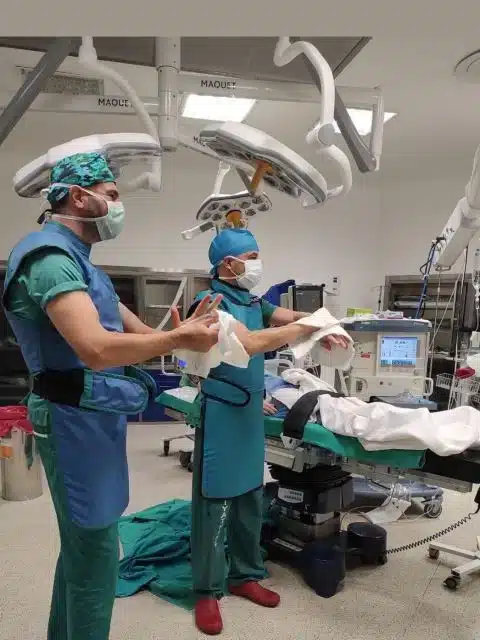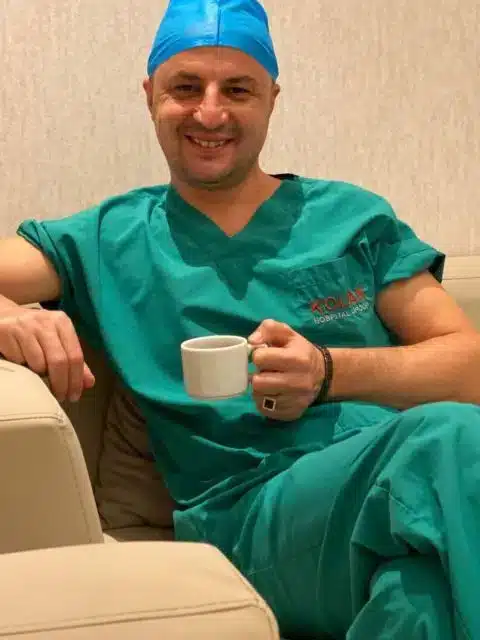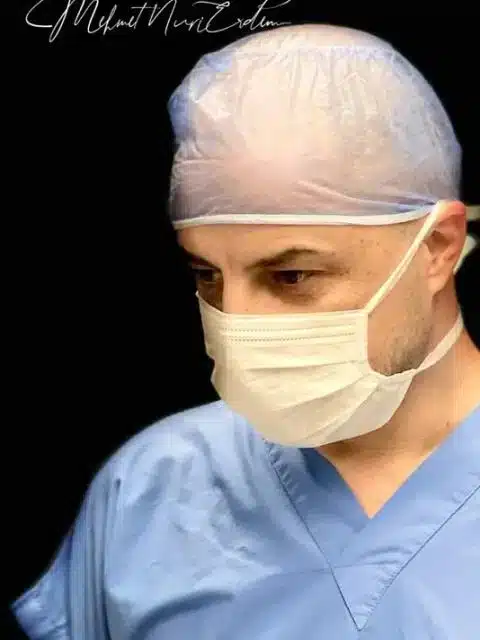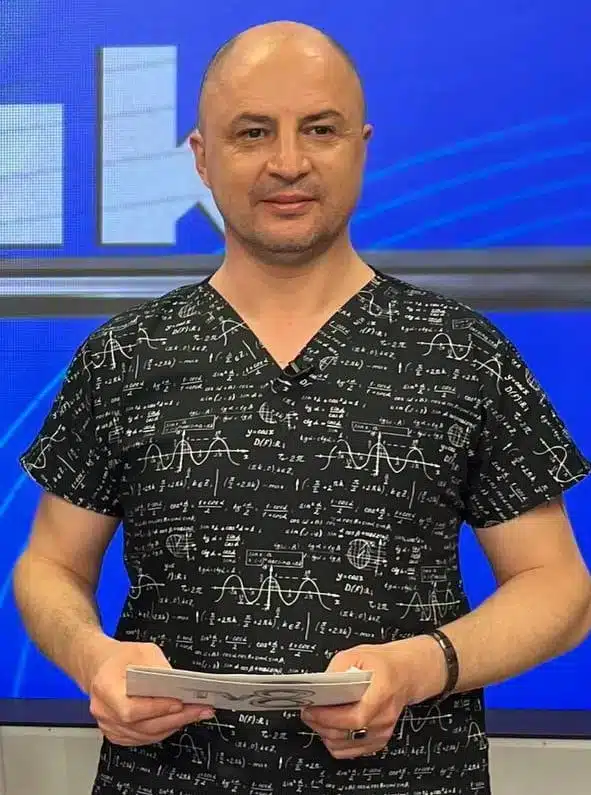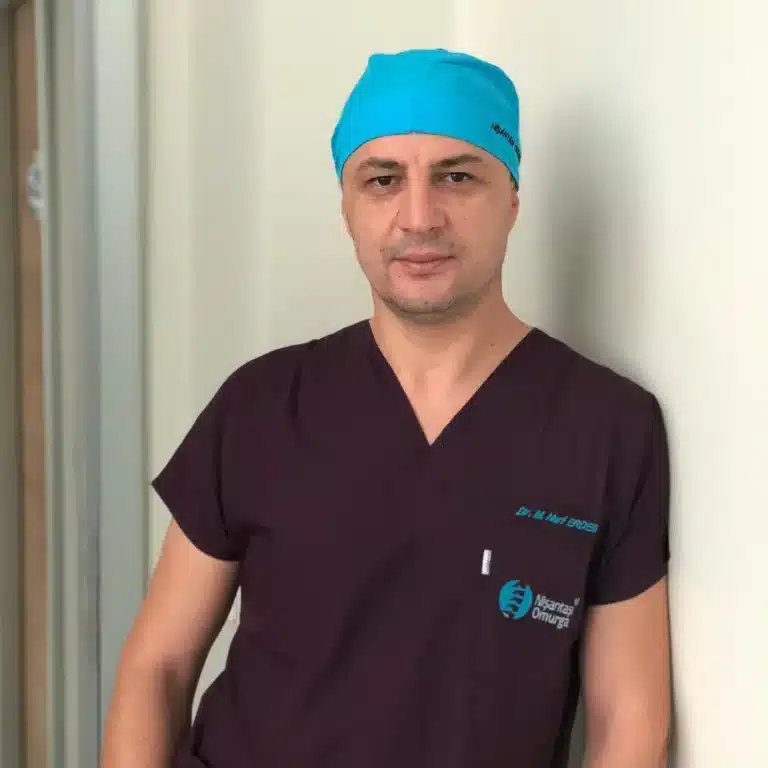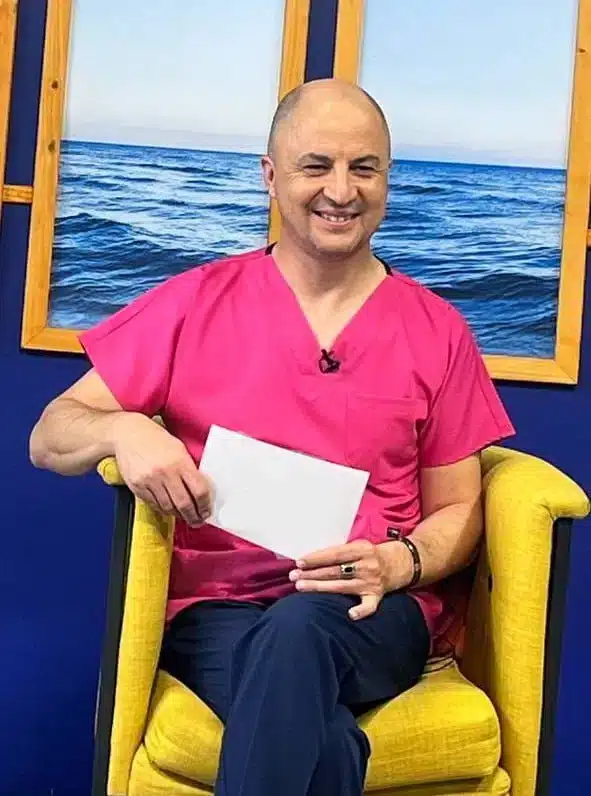Low back(lumbar) pain is a fairly common problem in society.
Contrary to popular belief, not all back pain is associated with herniated discs. And many patients can be cured without the need for surgical treatment.
In a small proportion, the treatment is by surgery, and it is not possible for these patients to be cured by any other treatment modalities.
What is Low Back Pain?
It is a condition that can be felt on or around the lumbar vertebrae and sometimes the spinal cord or nerve roots coming out of the spinal cord are also affected, which can cause pain in the legs as well.
It is called ‘acute’ low back pain when the onset period is less than 4 weeks, ‘subacute’ if it is between 4-12 weeks, and ‘chronic’ low back pain if it is longer than 12 weeks.
In many patients, pain is felt only over the lumbar vertebrae, and this type of low back pain is called musculoskeletal or non-neurological low back pain.
Neurological pain, on the other hand, develops due to a disease in which the spinal cord and nerve roots are affected. The pain can spread to the legs and cause more serious problems such as sensory defect and weakness.
Pain ranging to the legs is also called ‘sciatic pain’.
What is the Frequency of Low Back Pain?
Scientific studies on the frequency of low back pain have shown that 84% of the population has experienced low back pain at least once in their life.
The most common age is between the ages of 45-64.
The rate for women is slightly higher than for men.
The rate of pain hitting the legs (sciatica) has been reported to vary between 2-40%.
In a recent global study, low back pain was identified as the number one cause of disability.
What are the Risk Factors for Low Back Pain?
Many reasons lead to the pain. Among these, the most well-known risk factors are obesity, aging, heavy work, smoking, inactivity and stress, and psychosociological factors such as depression.
What is the Cause of Non-Neurological Low Back Pain?
In most of these pains, it is difficult to find the exact cause of the pain.
Degenerative changes (calcification) and injuries of the muscles, ligaments and soft tissues around the spine are considered the most common causes.
Activities such as heavy lifting can break or injure muscle fibers or tendons.
Repetitive movements or overuse of previously undertrained muscles can cause pain and spasms through lactic acid accumulation.
Diseases of the mobile joints behind our spine or the joints that connect the spine to the pelvis can also contribute to the occurence of low back pain.
What Causes Neurological Low Back Pain?
The most important factor causing neurological low back pain under the age of 65 is herniated disc at a rate of approximately 90%.
There is no pain sensation in the discs between the vertebrae. When the fibers surrounding the disc and providing its integrity are torn, pain begins as the contents of the disc begin to press on the spinal cord itself or on the nerve roots.
If over the age of 65, the nerve root is often affected by age-related degenerative spine changes (lumbar osteoarthritis). Compression of the nerve root results in impaired signal transmission and decreased supply of the nerve tissue. This process, which starts with pain, causes other problems such as sensory defect and weakness as it progresses.
What is Lumbar Spinal Stenosis? Does it Cause Back Pain?
In Contrast to the pain caused by the protrusion of the disc contents, as in lumbar hernia, in spinal stenosis there is a narrowing of the channels in which the nerve roots are located. This narrowing disrupts the flow of the cerebrospinal fluid in which the nerves are located and the supply of the nerves from the blood vessels.
What Are the Treatment Options for Low Back Pain?
The treatment for low back pain should be determined according to the cause of the pain and the location of the disease.
The treatment plan starts primarily with detailed examination and tests.
In mechanical low back pain, treatment methods are used such as;
- Medication
- Resting
- Methods of physical therapy
- Exercises that strengthen the waist muscles
- Waist corset
Things to Do to Prevent Low Back Pain
In order to prevent especially recurrent low back pain, to lose excess weight, quit smoking if any, perform regular and continuous muscle exercises for the waist, back and abdominal muscles, keep the back straight and leaning back while sitting, reduce daily tension and stress, use a pillow that fits the waist curve, not to lift heavy objects and to prefer hard and orthopedic mattresses while sleeping, play an important role.
Is Every Low Back Pain Hernia? Does it Require Surgery?
Only 20% of low back pain is caused by herniated disc.
And a small part of these hernias are treated with surgery.
The main thing here is to determine which patients, or in other words, which disorders require surgical treatment.
There are conditions that are so-called red flags when evaluating low back pain, which require immediate medical attention and are mostly treated surgically. These red flags can be studied under several headings:
- Neurological Findings: What is meant here is the loss of function of the nerves due to pressure on the spinal cord or nerve roots for any reason. This may manifest itself in the form of pain, numbness, felting and tingling in the legs. More importantly, as the nerve pressure increases, weakness in the muscles operated by this nerve, in other words, a state of paralysis occurs. This situation is most easily identified by comparing it with the other side. E.g; If a movement of the foot is weakened along with pain on one side, it indicates that the nerve has begun to become paralyzed, which requires urgent surgery.
- Spinal Fractures: The spine is responsible for protecting the spinal cord located in it. Therefore, in any kind of injury that will disrupt the integrity of the spine, there is a possibility of injury to the spinal cord and nerve roots coming out of the spinal cord. That is why appropriate treatment matters.
- Spinal Tumors and Infections: These are serious conditions and early diagnosis is very important. Pain at rest is one of the most important symptoms for the diagnosis of tumors and inflammatory problems. In this type of pain, the patient feels pain when there is no load on the spine. For example, the patient also feels pain while resting in bed and cannot give herself/himself a pain-free position. Symptoms such as fever, loss of appetite and weight loss should also imply infections. Excessive weight loss is one of the symptoms that can be seen in the presence of a tumor. In cases of these symptoms, a doctor should be consulted without wasting time.



